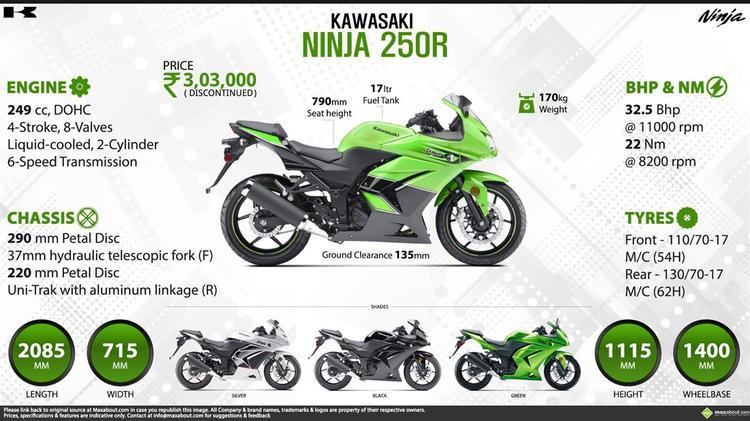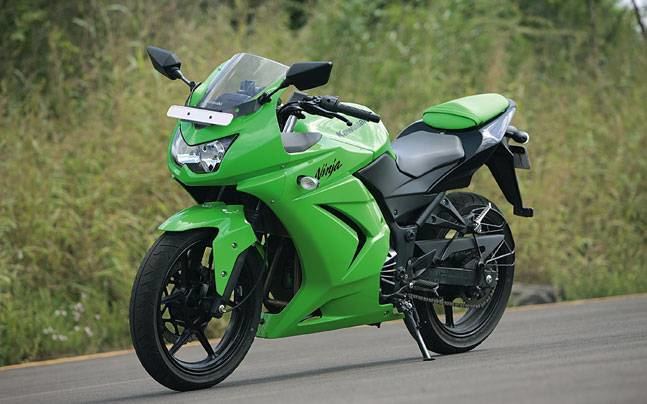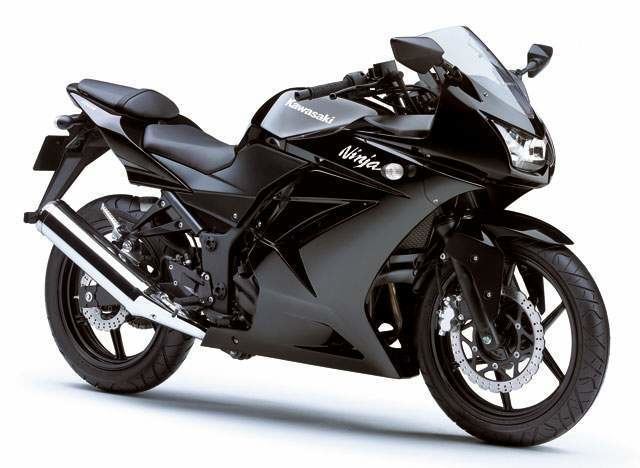Production 1986-present Related | Class Sport bike | |
 | ||
Parent company | ||
2010 bennche megelli 250r vs kawasaki ninja 250r motorcycle shoot out
The Kawasaki Ninja 250R (codenamed EX250; previous generations had market-specific names) is a motorcycle in the Ninja sport bike series from the Japanese manufacturer Kawasaki originally introduced is 1986. As the marque's entry-level sport bike, the motorcycle has undergone few changes throughout its quarter-century lifetime, having received only three substantial redesigns. In some markets the Ninja 250 has been succeeded by the Ninja 300.
Contents
- 2010 bennche megelli 250r vs kawasaki ninja 250r motorcycle shoot out
- 2008 kawasaki ninja 250r first ride motousa
- Nomenclature
- Model history
- 1983 1985 EX250 C
- 19861987 EX250 E
- 19882007 EX250 FEX250 GEX250 H
- 20082012 EX250 J
- 2013 present EX250 LEX250 M
- References

2008 kawasaki ninja 250r first ride motousa
Nomenclature

Since 2008, the bike is marketed as the Ninja 250R in all markets. It is also referred to by its platform designation, EX250, to which a generational suffix is attached. In the United States, previous models (EX250-E/F/G/H) were already being marketed as members of the Ninja family of sport bikes, while outside of the U.S. the bike was known variously as the ZZR-250, ZX-250, or as the GPX-250R. One of the earliest models, the EX250-C, was given the name GPZ-250.
Model history

The Ninja 250R's particular ergonomics, chassis design, and engine placement have resulted in a motorcycle that straddles the standard and sport classes. The Ninja's riding posture also falls between standard and sport.
1983-1985 (EX250-C)

The first generation was produced between 1983 and 1985, and known by the production number EX250-C. It was sold as the GPZ-250. Sold only in its home market of Japan, this earliest, belt-driven version was first produced in 1983, and shares no commonality with later generations. The bike has 32 mm fork tubes.
1986–1987 (EX250-E)
Produced between 1986 and 1987 was the EX250-E. This model was sold as the Ninja 250R in Canada and the U.S. between 1986 and 1987. It was known as the GPZ-250R elsewhere. When originally introduced, it was more costly than the Honda Rebel, and reviewers complained that while the 14,000 rpm redline was nice, the engine was slow to rev.
1988–2007 (EX250-F/EX250-G/EX250-H)
For the 1988 model year, there were both cosmetic changes and changes in engine tuning. While the bore and stroke, and other major engine components, were unchanged, minor tuning adjustments were made. The carburetor diameters were reduced 2 mm to 30 mm (1.2 in), the cylinder compression ratio was increased from 12.0:1 to 12.4:1, ignition timing advance was increased, and the rear sprocket was increased by three teeth to 45. Reviewers reported that this made the engine more free-revving, reaching the high 14,000 redline more quickly, and the tested top speed increased by a few miles per hour. The new, more fully enclosed bodywork was complimented for being stylish, at the time, and easily mistaken for the larger Ninja 750.
The third generation of production of the Ninja 250 encompassed three models:
2008–2012 (EX250-J)
In 2008, Kawasaki gave the EX250 its most extensive redesign in twenty years. The EX250-J model is known as the Ninja 250R worldwide, regardless of market.
Parts from the third generation are still found on the -J, but its redesigned exterior panels bring the Ninja's appearance out of the 1990s and into line with late-2000s sportbikes. The engine and drivetrain retain 30% of the -F model's parts, according to Kawasaki. The engine's compression and maximum torque have been lowered to provide better midrange performance. The redesign of the engine resulted in improvements in engine response at low engine speeds, making the bike smoother and "much easier to ride."
Though the previous generation Ninja 250 had a peak power advantage of 1 to 5 hp (0.75 to 3.73 kW), the new version's 20 or 30 percent increase in mid-range power allows the bike to pull from 3,000 rpm where previously it had to be revved to 4,000 rpm. The U.S. -J model uses dual carburetors like the -F model, but the European, Brazilian and Thai models have fuel injection. The wheels were increased in size to 17 inches, the front suspension was improved, and the brake rotors were replaced with a larger petal shape. On the carbureted version, a fuel gauge was added in place of the temperature gauge. With the additional and redesigned equipment, the EX250-J suffered a 10 kg (22 lb) increase in wet weight over its predecessors.
With the arrival of the EX250-J, manufacturing continues to be located in Thailand.
2013-present (EX250-L/EX250-M)
The 2013 Ninja 250R (EX250-L for the non-ABS version; EX250-M for the ABS version) had a new bodywork, twin headlights, a digital instruments cluster, new wheels with a wider 140 mm (5.5 in) rear tire, and a reworked engine and exhaust. ABS is available as an option. Like the previous generation, the engine is fuel injected in some markets and carbureted in others. For 2013, in some markets, the Ninja 250R was replaced by the 296 cc (18.1 cu in) Ninja 300 (EX300), while in others they are sold alongside each other and some sold the Ninja 250R only.
